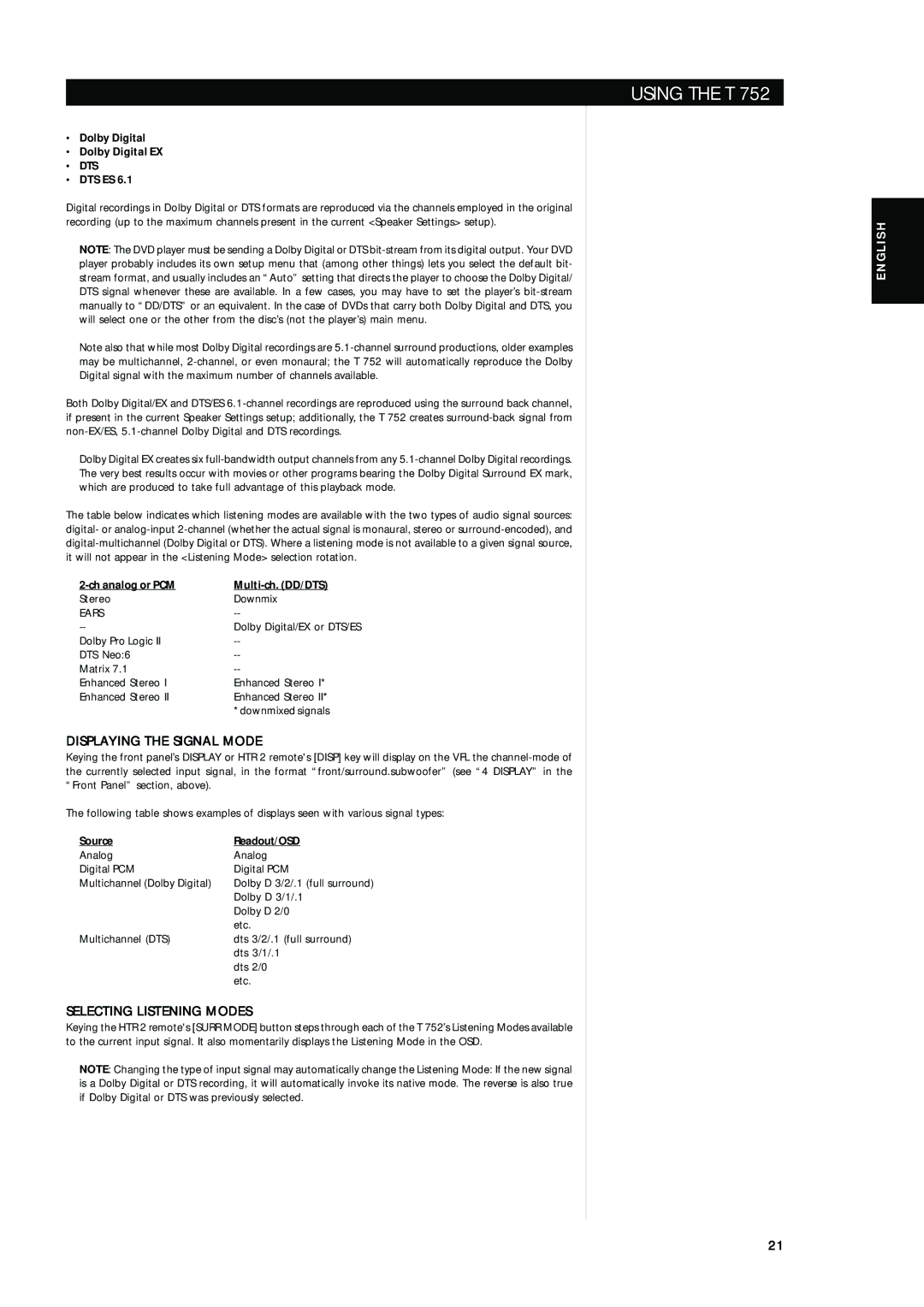
USING THE T 752
•Dolby Digital
•Dolby Digital EX
•DTS
•DTS ES 6.1
Digital recordings in Dolby Digital or DTS formats are reproduced via the channels employed in the original recording (up to the maximum channels present in the current <Speaker Settings> setup).
NOTE: The DVD player must be sending a Dolby Digital or DTS
Note also that while most Dolby Digital recordings are
Both Dolby Digital/EX and DTS/ES
Dolby Digital EX creates six
The table below indicates which listening modes are available with the two types of audio signal sources: digital- or
|
|
Stereo | Downmix |
EARS | |
Dolby Digital/EX or DTS/ES | |
Dolby Pro Logic II | |
DTS Neo:6 | |
Matrix 7.1 | |
Enhanced Stereo I | Enhanced Stereo I* |
Enhanced Stereo II | Enhanced Stereo II* |
| *downmixed signals |
DISPLAYING THE SIGNAL MODE
Keying the front panel’s DISPLAY or HTR 2 remote's [DISP] key will display on the VFL the
The following table shows examples of displays seen with various signal types:
Source | Readout/OSD |
Analog | Analog |
Digital PCM | Digital PCM |
Multichannel (Dolby Digital) | Dolby D 3/2/.1 (full surround) |
| Dolby D 3/1/.1 |
| Dolby D 2/0 |
| etc. |
Multichannel (DTS) | dts 3/2/.1 (full surround) |
| dts 3/1/.1 |
| dts 2/0 |
| etc. |
SELECTING LISTENING MODES
Keying the HTR 2 remote's [SURR MODE] button steps through each of the T 752’s Listening Modes available to the current input signal. It also momentarily displays the Listening Mode in the OSD.
NOTE: Changing the type of input signal may automatically change the Listening Mode: If the new signal is a Dolby Digital or DTS recording, it will automatically invoke its native mode. The reverse is also true if Dolby Digital or DTS was previously selected.
ENGLISH
2 1
